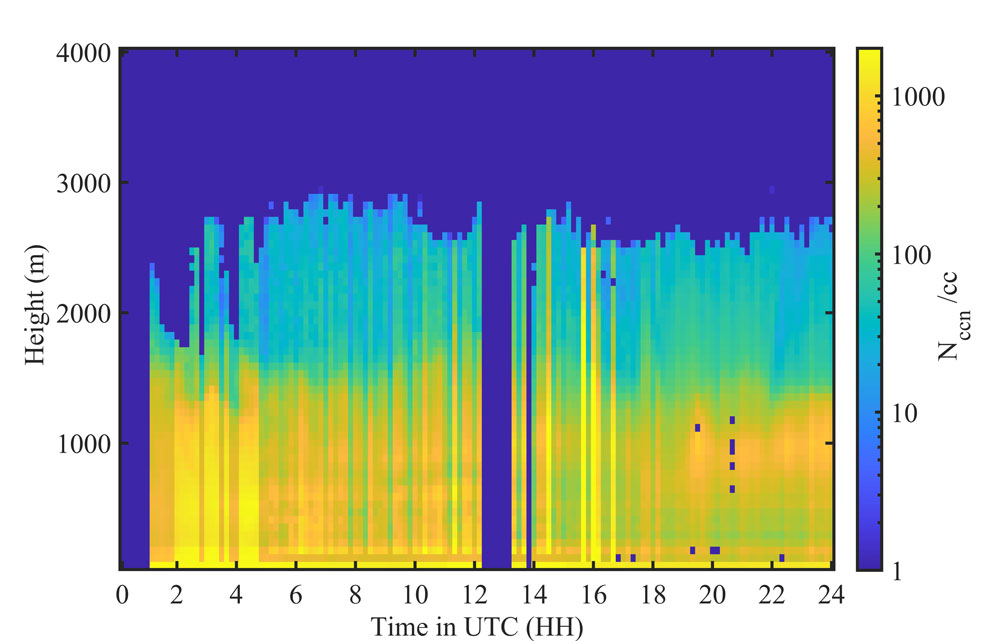
A new value-added product (VAP) provides the vertical distribution of cloud condensation nuclei (CCN) number concentrations for better representation of aerosol indirect effects in climate models.
The Retrieved Number concentration of Cloud Condensation Nuclei (RNCCN) VAP gives users the vertical profiles of CCN concentrations at the five supersaturation values measured by the CCN particle counter. (Supersaturation occurs when the relative humidity is at least 100%.) RNCCN also routinely provides measurements of CCN near cloud base, which is a proxy for the aerosol that is entrained into clouds and leads to droplet formation.
For input, the VAP uses quality-controlled Raman lidar profiles (aerosol extinction and feature mask), CCN spectral data, and hygroscopicity data derived from the humidified nephelometer. (Hygroscopicity is the ability of a particle to take up moisture from the environment and is important for understanding CCN formation.)
Output data are filtered using atmospheric stability and aerosol feature tests. The aerosol feature test filters lidar data that have been labeled as a cloud and/or rain. The VAP performs calculations only when aerosol is detected. Additional quality tests related to well-mixed conditions in the boundary layer are planned to develop a best-estimate RNCCN VAP.
RNCCN evaluation data are available from January 16 to September 29, 2016, for the Atmospheric Radiation Measurement (ARM) user facility’s Southern Great Plains (SGP) Central Facility near Lamont, Oklahoma. This data set allows for comparisons with in situ CCN data from the 2016 Holistic Interactions of Shallow Clouds, Aerosols, and Land-Ecosystems (HI-SCALE) field campaign at the SGP.
The RNCCN data have 1-hour time resolution and 60-meter vertical resolution. Data are in netCDF format.
Scientists can use the RNCCN data product to help improve understanding of aerosol-cloud interaction treatment in global earth system models. Future work will involve expanding the availability of this product at more ARM sites where Raman lidar, hygroscopic growth, and CCN particle counter data are available.
More information about RNCCN is available on the VAP web page.
Feedback about the evaluation data is encouraged. To provide feedback or ask questions about the SGP evaluation data, please contact VAP associate translator Gourihar Kulkarni, VAP developer Chitra Sivaraman, or ARM aerosol translator John Shilling.
Access the RNCCN data set in the ARM Data Center. (Go here to create an account to download the data.)
To cite the data, please use doi:10.5439/1813858.
# # #ARM is a DOE Office of Science user facility operated by nine DOE national laboratories.

